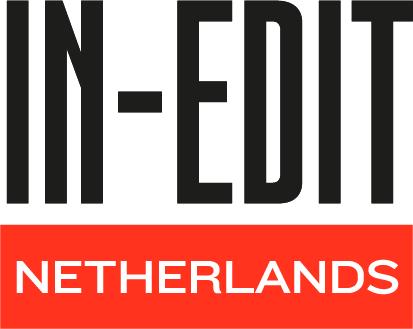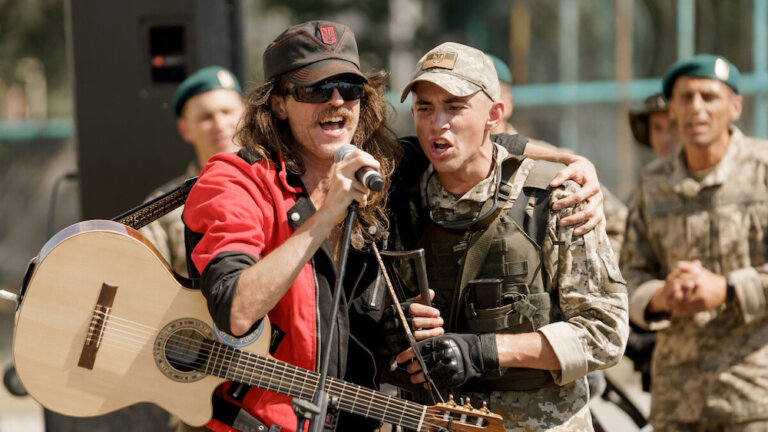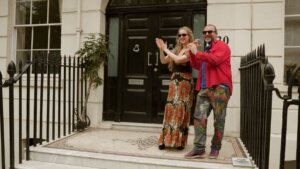Few bands manifest a visual and sonic identity as distinctly and vibrantly as Gogol Bordello. Fronted by the magnetic Eugene Hütz, a Ukrainian émigré whose life story reads like a novel, the band is an eclectic assembly of musicians from across the globe. They have not only pioneered a genre—gypsy punk—but have also created an auditory and visual tapestry that resonates with the themes of displacement, identity, and the search for freedom. Ahead of the screening of Scream of My Blood: A Gogol Bordello Story at In-EDIT NL (11 – 21 April, 20244), we thought to dive into the visual aesthetics that make this one-of-kind-band, well, just that, one-of-a-kind.
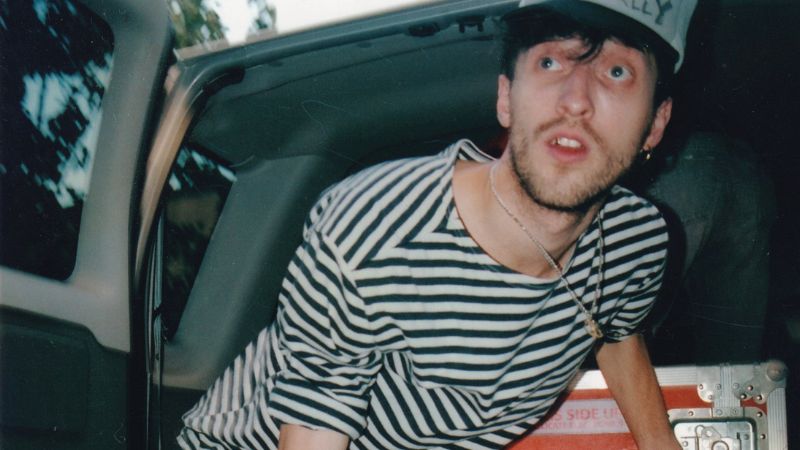
Gogol Bordello’s sound is an explosive cocktail of Eastern European gypsy music, infused with punk rock’s energy, and adorned with a global array of musical influences, from dub to Latin rhythms. Yet, what sets them apart is not just their sound but their visual aesthetic and performative energy, which embodies the band’s ethos of cultural amalgamation and resistance against conformity.
At the heart of Gogol Bordello’s visual identity lies a deliberate and thoughtful amalgamation of gypsy punk aesthetics, combining the rebellious spirit of punk with the nomadic, vibrant essence of Eastern European Romani culture. This fusion is evident in their music and visual presentation, both on stage and in their music videos. The band’s aesthetic is a riot of color, pattern, and texture, a visual metaphor for their sound, with Hütz often at the center, exuding charisma and a wild, untamed spirit.
Hütz has explicitly cited the work of filmmaker Emir Kusturica as an influence on the band’s music and overall aesthetic. His films, such as Time of the Gypsies and Black Cat, White Cat, are celebrated for their vibrant storytelling, eclectic characters, and the integral role music plays in driving the narrative and emotional landscape.
The parallels between Kusturica’s films and Gogol Bordello’s approach are evident in their mutual celebration of Romani culture and music, exuberant embrace of life’s chaotic beauty, and poignant commentary on the human condition. Both artist and band share a penchant for the carnivalesque, where the boundaries between the celebratory and the critical blur offer a space where joy and resistance coalesce to explore themes of displacement, identity, resilience of marginalized communities, and the spirit of human survival.
Hütz, with his iconic handlebar mustache and often shirtless torso adorned with tattoos, personifies the band’s visual identity. His stage outfits frequently include military regalia, traditional Eastern European attire, and an assortment of hats that seem to pay homage to a bygone era of gypsy lore and rebellion. This choice of attire bypasses spectacle, instead serving as a visual lexicon through which the band communicates cultural amalgamation and resistance.
The visual aesthetic of Gogol Bordello extends beyond the personal style of its members to also encompass their music videos and live performances. Their videos are often cinematic experiences, rich in narrative and visual symbolism. For example, the music video for Start Wearing Purple is a frenetic, jubilant celebration of individuality and eccentricity through color and chaos. Further videos of note are Wonderlust King, Trans-Continental Hustle, Pala Tute, and Immigraniada (We Comin’ Rougher), all of which explore themes of displacement, resilience, and the pursuit of freedom.
Live performances are where Gogol Bordello’s visual and musical elements coalesce into a singular, immersive experience. The stage becomes a microcosm of their aesthetic world, with band members often dressed in their signature eclectic fashion, engaging in theatrics that blur the line between concert and performance art. The energy of their live shows is palpable, with Hütz and company employing everything from wine bottles to drumsticks as props in a carnival-esque spectacle that consistently immerses audiences into frenzy.
This performative aspect of Gogol Bordello’s aesthetic is reminiscent of the punk ethos of DIY and anti-establishmentarianism. Yet, it is imbued with a sense of global camaraderie and cultural celebration that is distinctly their own, reflecting a more encompassing view of punk as a philosophy rather than a mere musical genre.
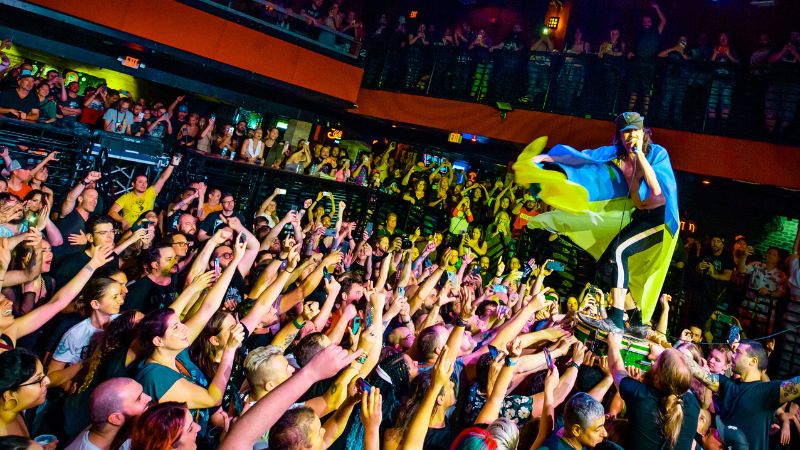
In examining the visual aesthetic of Gogol Bordello, one must also consider the cultural and political implications of their style. The band’s deliberate invocation of Romani and Eastern European motifs challenges Western stereotypes and misconceptions about these cultures. Thus, their aesthetic serves as a form of cultural diplomacy.
Furthermore, Gogol Bordello’s visual identity can be seen as a form of resistance against the homogenization of global culture. In an era where the cultural landscape is increasingly dominated by a narrow range of aesthetics, narratives, and brands, the band’s eclectic and inclusive visual style is a testament to cultural diversity’s beauty and vitality.
The visual aesthetic of Gogol Bordello is a crucial component of their artistry, serving as both a complement to their music and a stand-alone statement of their values and identity. Through their sartorial choices, music videos, and live performances, they craft a visual narrative as multifaceted as the band itself. In doing so, they entertain, challenge, provoke, and invite audiences to reimagine the possibilities of visual and musical expression. Gogol Bordello’s aesthetic is not just a style; it is a manifesto, a vibrant declaration of the power of art to bridge cultures and challenge norms.
